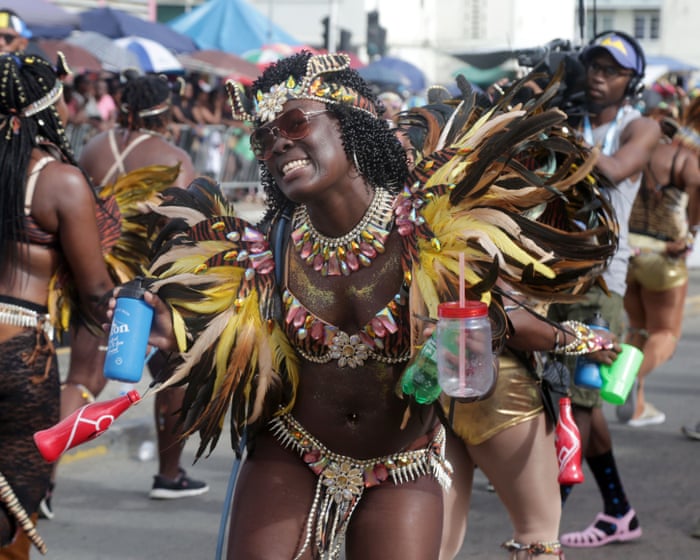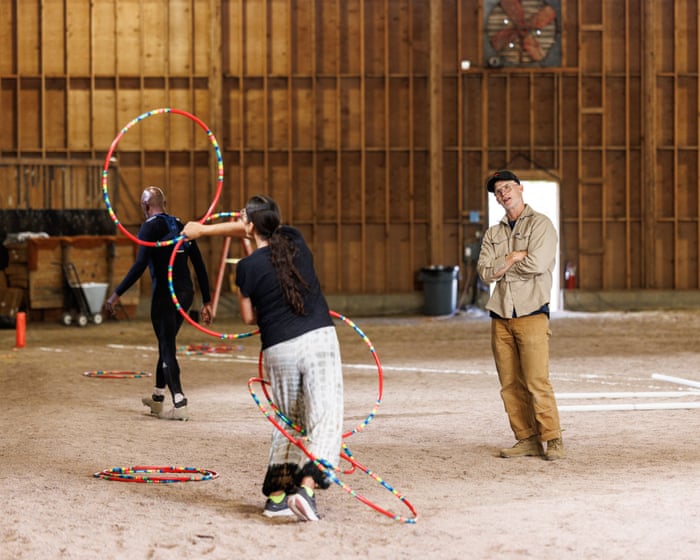At this year’s Fête de la Musique in Paris, British partygoers who had crossed the Channel to enjoy the annual street celebration—think Notting Hill Carnival without the parade—found themselves listening, and then quickly dancing, to a wildly upbeat track called Bouwéy.
Built around a laid-back vocal that contrasts with energetic African percussion, the song blasted from sound systems and car windows, standing out as something entirely unique: a summer anthem. Created by the Guadeloupean group 1T1, Bouwéy has now reached 12 million views on YouTube. But its frantic pace and striking synth work didn’t come out of nowhere—instead, it’s at the forefront of a sound called bouyon, part of a wave of dance genres emerging from the Caribbean to captivate the world, including at this weekend’s Notting Hill Carnival.
“Bouyon is a faster rhythm,” laughs Hillary “Tilly” Thomas over the phone. “You have to drink some rum—it’s carnival music, not everyone can handle it. You have to be a little crazy!”
Tilly, a key figure in the bouyon scene since the 2000s, now manages rising Dominican star DJ Taffy. Countless vocalists have jumped on Taffy’s frantic, wobbly instrumental, Funny Riddim. “Bouyon is a Dominican French word meaning a mix of foods,” Tilly explains. “Imagine you’re cooking; you put in yam, banana, chicken, fish, dumplings, and all the seasonings—it’s a one-pot dish. So the music is a fusion of African beats, soca, EDM, Haitian kompa, French music, and calypso. Like the food, we blend it all together. And then it has the ‘dom dom dom’”—he mimics the sound of a pounding kick drum—“that’s how you know it’s bouyon.”
It’s the genre’s suggestive lyrics—known as “nasty business” in Dominica—that have really turned heads, delighting young fans while troubling Caribbean radio station managers. “The edginess, combined with that pulsating beat, is what really brought the music to the world,” Tilly says. “Controversy sells!”
With just 44 million people spread across its islands, the Caribbean has had an outsized impact on global music. Western media often treat Jamaican culture as representative of the entire region, and while reggae and dancehall remain strong, their international success can overshadow the fact that other islands have been developing their own styles for decades.
Tilly is quick to clarify that bouyon isn’t new—he credits 1990s bands like WCK and Triple 0 with laying the foundation, followed by breakthrough acts in the 2010s such as Asa Bantan and producer Arade Moses, who mentored DJ Taffy. But since 2020, things have shifted: affordable production tools, low-cost digital distribution (along with Spotify’s late arrival in the Caribbean in 2021), and the rise of TikTok have all helped push these high-energy styles into the spotlight.
This trend extends beyond bouyon. In St. Lucia, the local version is called dennery segment, named after the village of Dennery where many artists got their start. Over the past year, scene leader Bozo, who produces as Bad Sound, has seen tracks like Both Twanche Riddim Refix played everywhere from St. Lucian parties to London’s influential NTS Radio. He credits his recent success to blending styles: the Both Twanche remix mixes dennery segment with New Jersey’s driving house music and a sample from Portuguese producer DJ Marfox. While newcomers might mistake dennery for a super-fast relative of soca—itself a rapid offshoot of calypso—Bozo points to Africa as the main inspiration. “Kuduro is the bigger influence,” he says, referring to the similarly high-tempo Angolan dance style. “We…””Try to blend other genres together.” This eclectic mix of styles, fast pace, and bold lyrics has made bouyon and Dennery the ideal soundtrack for TikTok’s attention-grabbing accounts. But as young listeners from London, Paris, and New York have started tuning in, not everyone back home has been quick to embrace its success.
“There was a time,” Bozo remembers, “when radio stations wanted to ban the genre because they said it was too explicit. Then, when the songs started taking off, they thought, ‘Okay, maybe we’ll give it a try.’ Now we fully embrace it as our own. Social media has played a big role in that.”
Tilly believes that using explicit lyrics was just a stepping stone to reaching a broader audience. “I told the artists, ‘Don’t worry, I’ll take the blame for the lyrics.’ We used that edginess to get the music out into the world. Now that we’ve done that, we’re back to making real bouyon—love songs, meaningful tracks.”
He may be right. The success of a more family-friendly song like “Bouwéy” has shown that controversial lyrics aren’t necessary for popularity. Producer Arade Moses, speaking with Tilly, is confident: “We always knew it would go far. It’s so full of energy, and the way young people respond to it is unique. True bouyon is too melodic to be held back!”
Frequently Asked Questions
Frequently Asked Questions About Not Everyone Can Handle It and HighEnergy Caribbean Carnival Music
1 What does Not everyone can handle it mean in this context
It refers to the intense fastpaced and powerful nature of the music played at Caribbean carnivalssome people might find it overwhelming due to its high energy and loud rhythmic beats
2 What kind of music is dominating Caribbean carnivals
Genres like Soca Dancehall and Calypso are the most popular known for their upbeat tempos infectious rhythms and lively percussion that get crowds moving
3 Why is this music so highenergy
Its designed for celebration and dancing during carnivals with fast beats heavy bass and energetic vocals that create a festive electrifying atmosphere
4 What are the benefits of listening to or dancing to this music
It boosts mood increases energy encourages physical activity and helps people connect with Caribbean culture and community spirit
5 Can beginners enjoy this music or is it only for experienced listeners
Absolutely While it might feel intense at first anyone can enjoy itstart with popular tracks and let the rhythm pull you in
6 What are some common challenges people face with this music
Some find the volume overwhelming the pace too fast to keep up with or the lyrics hard to understand due to accents or patois
7 Can you give examples of artists or songs in this style
Sure Popular artists include Machel Montano Bunji Garlin and Patrice Roberts Hit songs like Famalay by Skinny Fabulous or Tremor by Destra are great starters
8 How can I get into this music if its new to me
Start by listening to playlists of top Soca or Dancehall hits watch carnival performance videos online and try dancing along to feel the energy
9 Is this music only played during carnivals or can I enjoy it yearround
While it peaks during carnival season you can enjoy it anytimemany people play it at parties workouts or just to lift their spirits
10 What makes Caribbean carnival music unique compared to other highenergy genres
Its fusion of African Latin and indigenous




